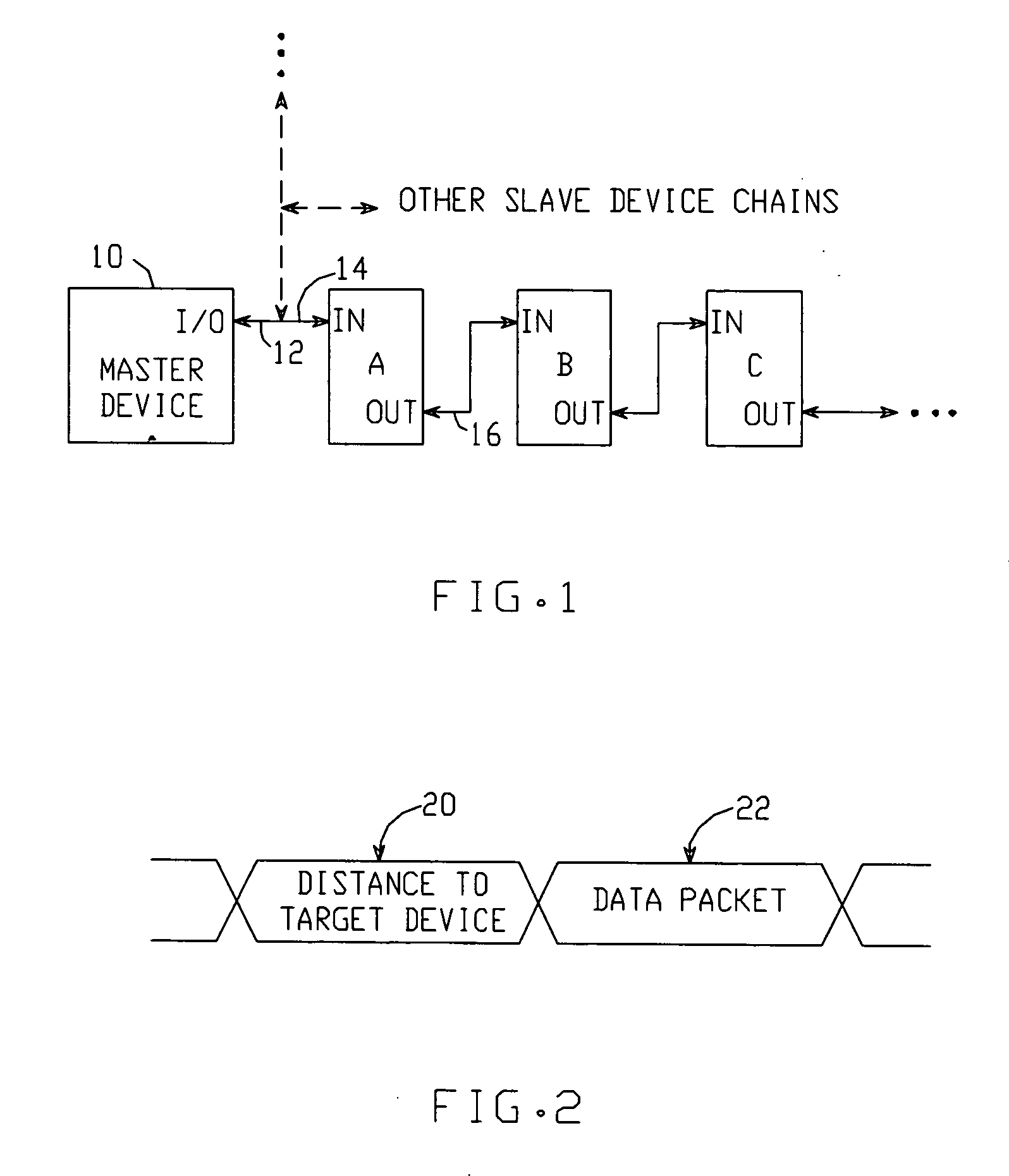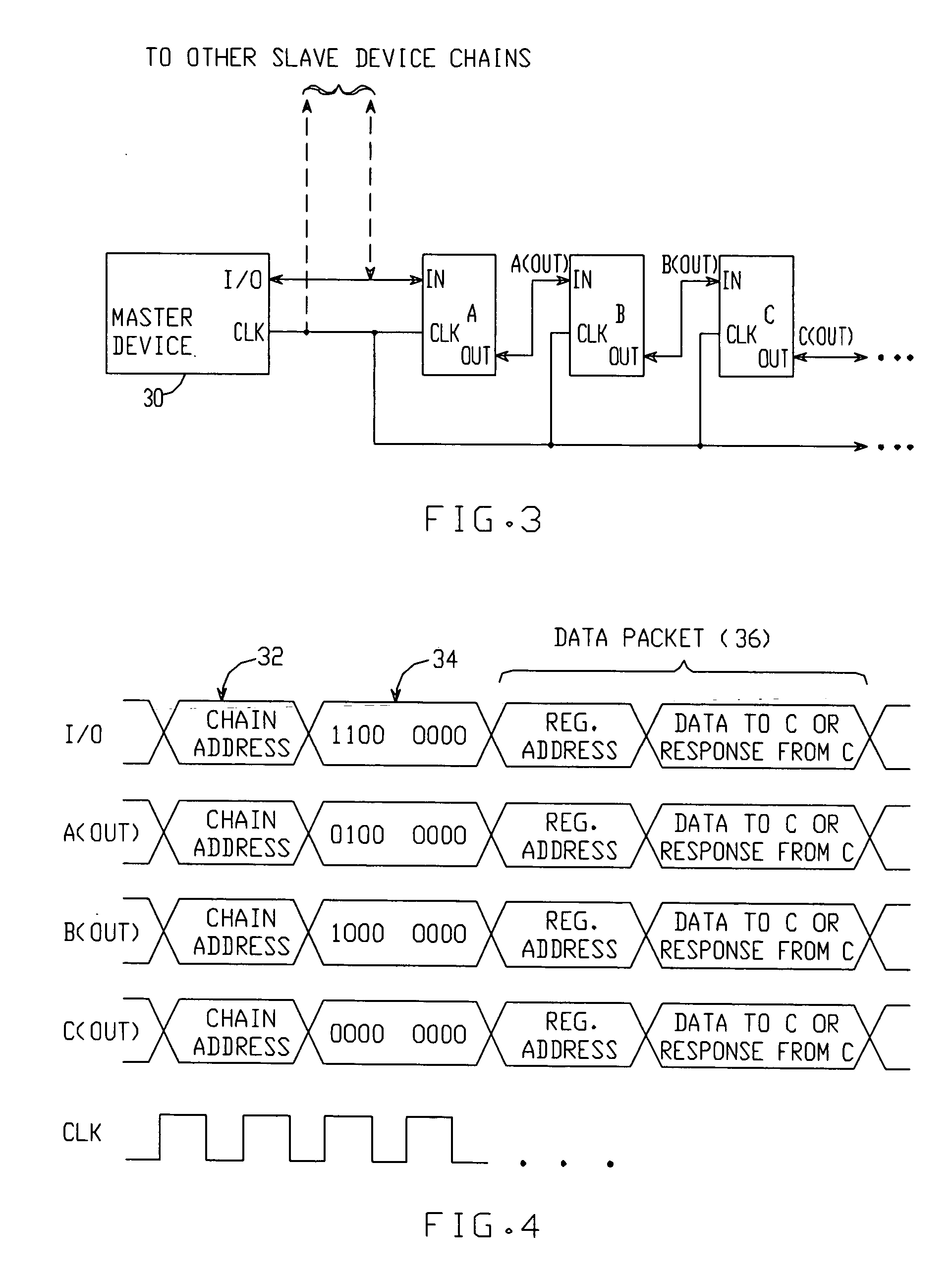Serial digital communication system and method
a digital communication system and digital communication technology, applied in the field of digital communication systems, can solve the problems of increasing processing overhead and system i/o requirements, consuming more area than is desired, and unacceptably high costs
- Summary
- Abstract
- Description
- Claims
- Application Information
AI Technical Summary
Benefits of technology
Problems solved by technology
Method used
Image
Examples
Embodiment Construction
[0025] A serial digital communication system per the present invention is shown in FIG. 1. A master device 10, such as a microprocessor or microcontroller, has an input / output (I / O) node 12 for sending and receiving messages to and from one or more ‘slave’ devices. The slave devices (device A, device B, device C, . . . ) are serially connected to form a chain. Each slave device has at least a first node (14) and a second node (16): the first node 14 of the first slave device in the chain (device A) is connected to the master device's I / O node 12, and the second node of each slave device is connected to the first node of the subsequent slave device in the chain. Though the first and second nodes are labeled “IN” and “OUT”, respectively, each preferably operates bi-directionally—i.e., the master and slave devices are preferably arranged such that each node supports bi-directional communication.
[0026] The master device is arranged to originate messages, each of which is intended for a...
PUM
 Login to View More
Login to View More Abstract
Description
Claims
Application Information
 Login to View More
Login to View More - R&D
- Intellectual Property
- Life Sciences
- Materials
- Tech Scout
- Unparalleled Data Quality
- Higher Quality Content
- 60% Fewer Hallucinations
Browse by: Latest US Patents, China's latest patents, Technical Efficacy Thesaurus, Application Domain, Technology Topic, Popular Technical Reports.
© 2025 PatSnap. All rights reserved.Legal|Privacy policy|Modern Slavery Act Transparency Statement|Sitemap|About US| Contact US: help@patsnap.com



